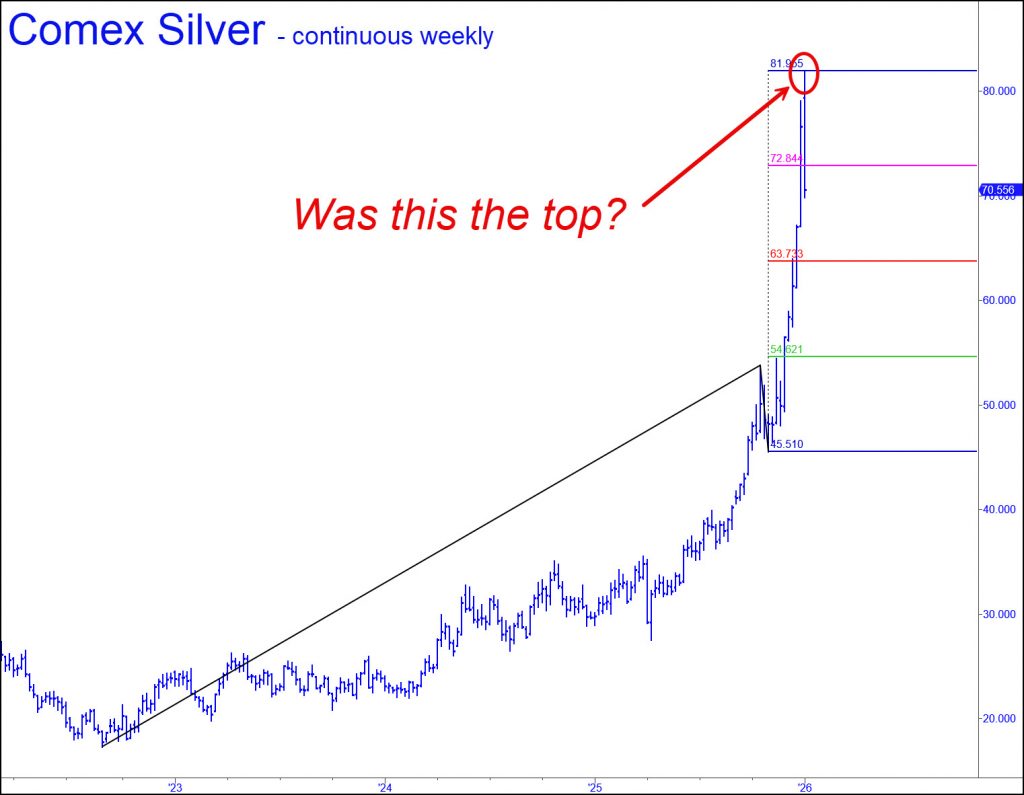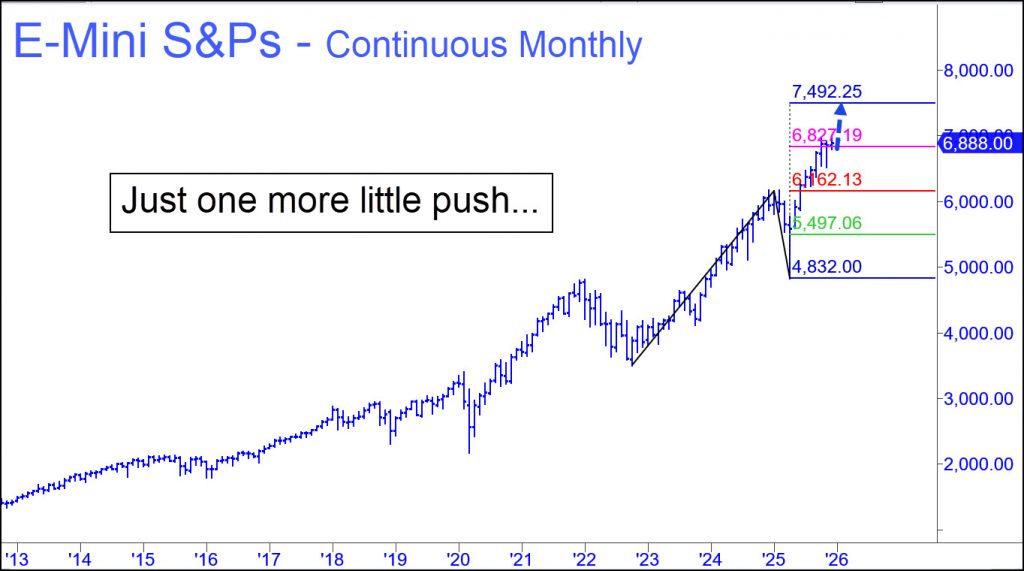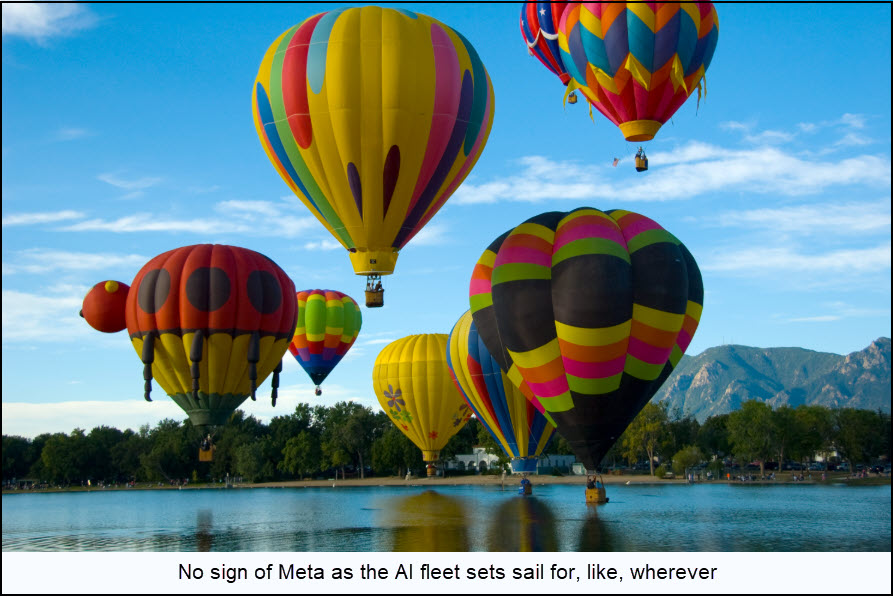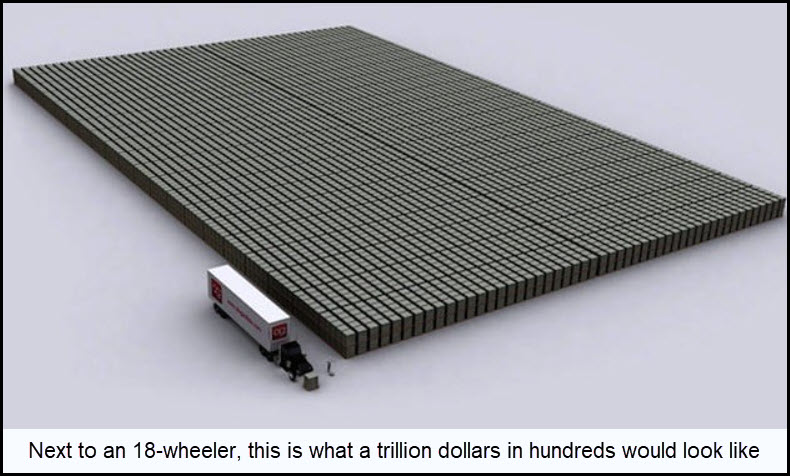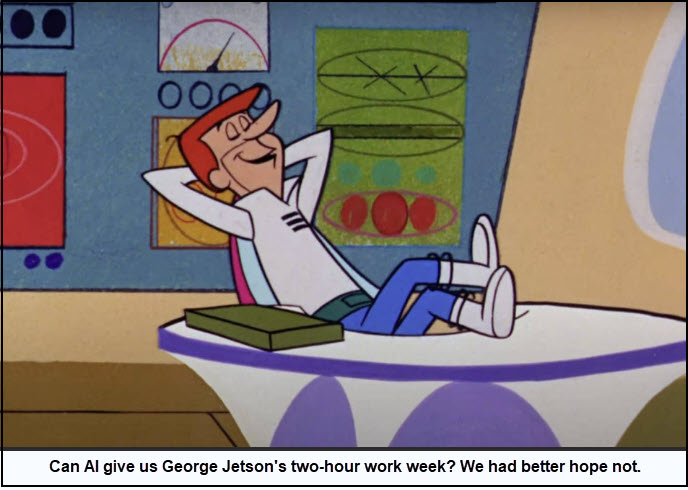The Morning Line
So Much Is Riding on Silver!
The speculative frenzy in silver has provided welcome relief from AI claptrap, but will it last? There are a hundred theories about why silver has come exuberantly to life after lagging gold for so long. I’ve been puzzled myself, since my technical runes suggest that gold futures could make an important top at $5132, about $800 above Friday’s settlement price. Silver would likely peak at the same time, unless the squeeze on physical supply were to pick up enough climactic energy to cause an historical readjustment in the gold:silver ratio. The Founders thought 15:1 was the correct peg, implying silver could be trading for $342 with gold at $5132. That sounds farfetched, but stranger things have happened in the financial world, especially in markets caught in short squeezes.
What is most peculiar about the current run on silver is that it probably couldn’t have occurred without Trump’s blessings. He has said he wants a much higher gold price in order to monetize America’s few remaining, unhocked assets (including residential real estate). Letting silver off the leash would make almost everyone feel at least a little richer. The problem is, some of Trump’s most powerful buddies in the banking business are short silver up the wazoo. Citi and B of A alone reportedly have loaned out at interest $4.5 billion of silver they do not possess, exposing themelves to potentially catastrophic losses if AG quotes should soar anew.
Trump’s Fortunes
And what if gold goes no higher than $5132? A corresponding top in silver followed by a steep slide in both could cap Trump’s fortunes. It would certainly destroy the comforting illusion that financial markets are under control. Of course, crazy ideas like that can only persist in bull markets. If stock averages were to sell off by 30%-40%, which they absolutely will at some point, whoever is President at the time will be not just a lame duck, but a dead duck. Keen for more of my latest rantings? Find them on This Week in Money by clicking here.
Holiday Greetings!
My best wishes to you all for the holiday season and the New Year. May you and yours enjoy good health, prosperity and serene contentment in 2026. My regular weekly commentaries will resume with the edition scheduled for publication on Sunday, January 4. In the meantime, trading ‘touts’ (see below) will update as usual late Sunday afternoon.
Grand Supercycle Will End with Trump
The widespread notion that a U.S. president can significantly influence the economy is mistaken. In observable fact, the broad cycles that bring us good times and bad, booms and busts, are vastly larger and more powerful than the presidency, too overwhelming to even affect, let alone command. Even the radical policies of Roosevelt’s New Deal were insufficient to end a depression that had taken more than a generation to gather force. America’s eventual emergence from those very hard times happened gradually during the administrations of Truman, Eisenhower and Kennedy. Moreover, the post-war rebuilding process that made Europe and Japan America’s best customers arguably would have happened cyclically without a Marshall Plan, and the U.S. financial system would have receded naturally from the fiscal excesses of a war that itself was an uncontrollable cyclical event.
In this view, Kennedy, Clinton, Obama and Biden were simply lucky to have been elected with the economy and the stock market at cyclical lows. For in no way did they cause the upswings that shone on their terms in office, nor the felicitous shifts in the mood of consumers. The bullish cycle had to have been particularly strong to survive the misbegotten policies of Obama, the first president to revile American exceptionalism, if not America itself.
Surfing the Big Wave
Which brings us to Trump, the president who has come closest to affecting the economy both inside and outside the U.S. Trump inherited a fiscal blowout impelled by the covid hoax, but he has since turned it into a credit and fiscal bonfire that can only end in ashes. Trump has merely extended an especially powerful upswing that he did nothing to cause. It should have ended with the senile Biden and his autopen administration, but Trump’s aggressive economic activism kicked already booming asset values into high gear. It is no ordinary boom, but rather the spectacular finale of a Grand Supercycle that long-wave forecasters date back as far as the 1700s. It was logical and perhaps even inevitable that the coming, severe downturn should have summoned so grandiose a personality as Trump to stage a last hurrah.
His popularity and credibility have already peaked with his all-in bet to give Americans ‘affordability’. This should have been apparent to anyone who watched his relatively short, heavily stuffed speech last week. Trump trotted out charts and tables to show how the cost of eggs, gasoline, poultry and such have begun to fall. Well, whoopee doo. But even if half-price Ozempic for every American were to arrive before midterm elections, the nation will still be dealing with the deeply structural, intractable problems of unaffordable big things: housing, healthcare, insurance, college education and automobiles. Trump’s affordability promise is doomed to failure, and every American senses this. His hubris will put a fitting end to the Grand Supercycle, and it is the reason why the stock market has seemed so dead-tired lately. [For an earful on silver, AI and ‘lunatic-sector’ stocks that have begun to sputter out, click here for my latest rant at HoweStreet.]
Conviction, Guts Finally Paying Off in Bullion
Just one more push could exhaust a bull market that is coming up on its seventeenth year. Although that’s only about three dog years, it equates to about 120 human years. In fact, no other bull market has lasted even remotely that long. The next-oldest, birthed at the low of the October 1987 Crash, was 13 years old before a crash in tech-sector stocks ended the dream for millions of investors grown stupid on greed.
Could it happen again? Only a fool would ask that question. My recent commentaries have warned with increasing shrillness that stocks are in a topping process. I have purposely left the details vague, since bull-market tops are notoriously full of deceptions. However, the chart above provides a compelling number for the party to end, a 7492 Hidden Pivot target for the E-Mini S&P futures that lies 8.6% above.
Last week featured the second straight Friday on which bulls and bears did little more than screw the pooch. Usually, Fridays are fun, or at least interesting, for one group or the other. But lately it’s been like watching a heavyweight slugfest that turned bloody in the seventh round. Bears have lacked the guts to deliver the haymaker, but the buy-the-dips junkies, who have been winning on points since 2009, seem too fatigued and lacking in conviction to counterpunch. Thus did stocks fall to end the week, although not enough to worry anyone, much less spook the herd.
Paralyzed by Doubt
All the excitement was in gold and silver, which have been rising since early 2024 in a steepening trajectory. The uptrend is practically vertical now and in need of a rest. But that is not how bull markets work, as many bulls are discovering. Although they’ve been praying for a big move for years, now that it is finally happening, they are paralyzed with doubt, unable to board an uptrend that left them waiting at the station months ago. And so they sit on their thumbs, hoping to scoop up bullion near the bottom of a big correction that never comes.
Some who frequent the Rick’s Picks trading room are notable exceptions. They have been sitting on bullion stocks and ingots for months or even years. As one of them notes, the big money is made not by playing the whipsaws and joining in the madness, but by waiting patiently for an enduring bull market that was always certain to come sooner or later. It is here now, and those with the patience and conviction to stay with it are reaping outsize rewards that implicitly rebuke the trader mentality.
Zuckerberg’s Huge Branding Problem
Stocks looked leaden as the week ended, adding to the impression that the aging bull market is topping. The Dow tacked on a perfunctory 104 points, or 0.22%, and it wasn’t pretty. There was little life in the lunatic sector (aka ‘the Magnificent Seven’), which until recently could be relied on to celebrate its wildest flights of fantasy on Fridays. The biggest winner in the bunch was META, which rose 1.80% on news that Zuckerberg is having second thoughts about his all-in bet on a metaverse.
If you’re unfamiliar with the term, it refers to a virtual world in which users interact online through avatars. Zuckerberg evidently thought there were hundreds of millions of us, if not billions, eager to escape the pain and drudgery of day-to-day life. He was so certain about this that he changed the name of his company in 2021 from Facebook to Meta. But after sinking $70 billion into the concept, there has been precious little payback. Even more troubling to investors is that there are no obvious ways to make back what has been spent already, nor to recoup any further sums Meta might pour into the idea.
Counting on Investors’ Stupidity
To cover up this boo-boo, and to avoid being thought clueless, Zuckerberg did what any muckety-muck CEO in the digital world would have done: a twisting somersault onto the AI bandwagon. “AI is the most important technology we are working on,” he said, evidently hoping investors have forgotten that he spent the last four years taking pains to separate the supposed;y lucrative potential of metaverse from the vague and so-far profitless promises of AI. This latest statement to the press was a smart move if you believe that the $10 gain recorded by META on Friday was the beginning of a lasting rally. More likely is that it will be reversed on Monday or Tuesday, adding to the disillusionment that has been weighing on the broad averages for the last few months.
Meanwhile, Facebook is stuck with a moniker and a concept that are perceived as dead on arrival. Although Zuckerberg is known as a smooth talker, watching him try to extricate himself from this memic trap promises to be entertaining. Faced with a branding problem that is not merely tricky but potentially fatal, he doesn’t dare return to the name ‘Facebook’, since that would be admitting failure and the stupidity of his biggest-ever idea. But if he changes the company’s name a second time to some as-yet-unclaimed, nebulous variant of AI, he will look like a flake. My guess is that he will stick with Meta, forever associating himself with a virtual Edsel. Like Johnny Cash’s boy named Sue, Zuckerberg will have to work three times as hard to be taken seriously, particularly by his billionaire cohort who are already well aloft in their splendiferous AI hot-air balloons. [Click here for the rest of it in my latest conversation with Jim Goddard on This Week in Money.]
Bear Sighting Was Premature
Like UFOs and Bigfoot, far more bear market sightings are imagined than real. I thought I’d spotted Papa Bear myself when Nvidia announced terrific earnings a couple of weeks ago, only to see their shares reverse and dive sharply after a deceptive spike higher. Was this the needle prick that burst the AI bubble? It certainly seemed like it; for it was not merely plausible, but logical, given that Wall Street and the entire investment world were desperately counting on a single company, albeit a $5 trillion one, to turn sagging markets around. They got their wish, but it was a delayed reaction that must have spooked many investors. Stocks plunged for several days after the announcement before catching a bottom and reversing steeply.
Your editor was one of the non-believers who were certain stocks had entered a bear market that was long overdue. It wasn’t just Nvidia’s performance, either. Trump’s fortunes, if not to say his very credibility, seemed to be ebbing, in part because his nemesis Epstein was creeping back into the headlines. The President was uncharacteristically back on his heels, seemingly in synch with falling stocks. But within a few days, NVDA appeared to be basing, Trump was masterfully diverting the news media toward a possible peace pact between Russia and Ukraine, and stocks were in a steep recovery. It was sufficiently ferocious to seem like a classical bear rally, and that’s what I assumed it was — until, that is, in just three days, the broad averages had already maneuvered to within easy distance of new highs. That was on Friday, and there’s no point pretending the rally is a fake, destined to end with a whimper.
Place Your Bets
I continue to believe, nonetheless, that stocks are in a topping process. However, a bear market is unlikely to begin now, with bullish seasonality revved to the max and corporate media beating the drums for more Fed easing. In a sane world, investors’ fatal addiction to Fed credit injections would have been rebuked years ago by a severe recession. These are crazy times, though, and ending them may call for a more potent kind of symbolism than NVDA’s price histrionics. In that regard, the question whether Elon Musk will become the world’s first trillionaire springs to mind. It’s time to place your bets.
Nvidia’s Dive Is More than Merely Disappointing
There’ll be more to say about the bear market as it develops. It has taken some baby steps so far, with a 2,100-point slide in the Dow over several days, then a stunning, 1,115-point reversal to the downside after Nvidia announced strong earnings last Thursday. Talking heads and editorialists opined that quarterly numbers were not quite as sensational as investors had anticipated, but they missed the point. For just as poor earnings barely fazed stocks during the 16-year bull market, merely decent earnings are unlikely to provide more than fleeting upticks in a bear market. Get used to it, because this new dynamic will be with us until shares hit bottom years from now.
With respect to Nvidia, it didn’t help that Wall Street and every investor on earth was desperately counting on their earnings announcement to reverse the slide of the broad averages in the days preceding the report. When the Dow notched a record high on November 12, pundits paid scant attention to the failure of the usually feisty Nasdaq Index and the ‘Cubes’ (QQQ) to follow suit. Six months from now, however, this divergence will be seen as one of those bells that supposedly doesn’t ring at the top.
Making Disney a Has-Been
Although my vantage point on Nvidia is purely technical, others saw the stock’s punitive reversal as related to the questionable way they report earnings. One analyst cited the exceptionally long lag time between billings and receipts. Were the global economy to fall into recession, he notes, the manufacturer could conceivably get stiffed by strapped customers, wiping billions of dollars in profits already recorded from Nvidia’s books.
‘Fundamentals’ undoubtedly figured into NVDA’s surprising plunge, but the long-overdue deflation of AI hubris was surely a more powerful factor. I address this subject in a recent interview with Jim Goddard on This Week in Money. I also talk about how AI’s latest gift to the masses, Sora, has sounded the death knell for Hollywood studios. These days, even kids can make professional-quality movies scripted by machines and vividly realized using apps like Sora, an OpenAI product. The quality of homemade-video content on YouTube has already surpassed the wretched, vacuous bilge that Disney’s bean counters have been churning out for decades. Moreover, because 14-year-olds are unlikely to be inhibited by copyright laws, we can expect to see an online bazaar develop for their creative work that will supplant the big studios and suburban multiplexes. This cottage industry will grow in the hands of home producers and in countless streaming venues that have already made theaters obsolete. The technology is highly disruptive to the extent it has begun to dominate content on YouTube channels that reach as many as 375 million viewers.
‘Affordability’ Will Be Trump’s Waterloo
The ‘affordability’ issue percolated to the top of the news last week, but in a peculiar way. On the right, the debate was not about whether things in general are becoming less affordable for most Americans, as they unmistakably are, but whether the left has blown the issue far out of proportion to create a wave of discontent ahead of next November’s general election. The discussion was catalyzed by abysmal consumer sentiment numbers that registered lows not seen since the Great Depression. Trump courted controversy over this in an interview with Fox’s Laura Ingraham. The economy is going great guns, he declaimed, and what’s the problem? He then stepped into quicksand by owning an issue far more real than political. Although he didn’t say these words exactly, what America heard was: “I’m going to give you affordability like you won’t believe.” This is a promise he cannot possibly keep, and his stumble on this key issue eventually will be seen as the beginning of the end for boom times on Wall Street and the Everything Bubble.
In stark actuality, the Second Great Depression has already begun for half of America. As my colleague Charles Hugh-Smith notes, the rich have grown increasingly wealthy from a price bubble in real estate and financial assets while barely noticing the descent of the bottom 50% into penury. “While the top 10% busy themselves with using AI to improve work flow, obsessing over geopolitics and the decay of their perks of their Titanium credit card, other Americans are concerned with finding a second or third side-hustle as the soaring costs of utilities, rent, auto insurance and repairs, childcare and healthcare are forcing choices nobody wants to make: What [necessities to forgo.]”
The Best of Times?
Trump risks failure by amping up his spiel about how we are all living in the best of times. Although some of his MAGA ambitions are well-conceived and achievable, his agenda cannot succeed until America has paid down debts that will continue to suck the oxygen from any real or lasting recovery. The President seems to think stoking credit will enable us to grow our way out of these obligations. This is an absurdity, and the stock market appears to have caught the pungent scent of snake oil in Trump’s nostrums. Even as legacy-media hacks were loudly proclaiming the Dow Average’s climb to new record highs last week, the Nasdaq and S&P 500 were conspicuous laggards. The divergence suggests the stock market has either topped or is very close to doing so, a possibility that I headlined here a few weeks ago. Most investors will not believe it until the Dow plunges 2,000 or more points in a single day. That day is coming, probably no later than January and possibly much sooner, and it will mark only the beginning of a downturn that will be one for the ages.
If AI Is in a Bubble, It WILL Pop
[ My friend Doug Behnfield, a wealth manager and senior vice president at Morgan Stanley in Boulder, has contributed many commentaries to Rick’s Picks over the years. Below is the Q3 report he sent out to clients several weeks ago. Like many observers, he is troubled by the enormous concentration of investment capital in the AI space. Can the eventual payoff ever be big enough to justify the estimated $10 trillion that will flow into AI technology by 2030? Read why Doug thinks there are better places to park your money. With apologies to him, I have dispensed with his meticulous footnotes and several graphs to simplify typography. The Jetson’s illustration was also my idea, based on his original headline, ‘Thoughts on the Jetsons and Rope-a-Dope’. RA ]
In late 1962, CBS introduced the Hanna-Barbera evening cartoon The Jetsons. It was inspired by their hit series The Flintstones, but set in the future. It lasted for only 24 weekly episodes, but it made an indelible impression on the Baby Boom Generation. Along with flying cars and Rosie the robotic maid, George Jetson worked two days a week, one hour per day (not remotely), and all he did was go in and push a button to start and stop a machine. (the Referential Unisonic Digital Indexer Machine, at Spacely Sprockets).
I was reminded of The Jetsons when reading a Wall Street Journal article describing the rivalry between Mark Zuckerberg and Elon Musk in developing robots. In it, Elon Musk predicts that there will be “at least 10 billion humanoid robots in the world, remaking the idea of work and life” by 2040 (The Jetsons was set in 2062). Zuckerberg’s humanoid robotic aspirations are dependent on gathering data from the microphone and camera in his Artificial Intelligence (AI) Glasses. With them, he intends to create the Large Language Model (LLM) that will be used to program the machine that can do all your work for you. The glasses will eventually record what you see, gathering “vision data,” even as they make a “wearable” fashion statement.
When reading about the development of AI eyeglasses, I was impressed with the breakthrough represented by having a screen projected inside the lens, providing closed captioning (with foreign language translation) for face-to-face conversations. Next will be AI-generated conversational response recommendations literally right before your eyes! Apparently, AirPods now translate in real time too. These developments represent a leap in communication technology, beyond translators that are common on cell phones.
The irony is that there is quite a debate concerning the impact that screen time can have on mental health in general and childhood development in particular. At least people will stop walking around with their phones in their faces.
There is a wide range of opinion about how AI will impact productivity across the spectrum of human activity and the speed at which AI will be implemented. The list of potential productivity enhancements is long and broad, as are the concerns surrounding the unknown future of how AI will develop. Lacy Hunt put it this way:
“AI decreases labor demand by automating cognitive and repetitive tasks across a wide range of service sector skills. Prior automation mainly affected routine factory roles, but AI goes further. Traditionally, new graduates gained experience through tasks such as data collection and analysis. Now, AI can do these tasks quickly, sharply reducing the need for junior staff. One AI-enabled employee now replaces several people, resulting in fewer hiring needs. AI also enables firms to automate mid-skill roles, thereby pushing down salaries and shifting choices from people to software. This did not happen in prior technology waves. Reports indicate that college graduates already face lower demand because AI can handle advanced tasks. This results in slower hiring, weaker wage growth, and reduced bargaining power for workers without irreplaceable skill.” The expectation is that AI will reduce the need for capital investment and employment in entry as well as mid-level staff, including medical assistants, legal aids and customer service associates as their tasks are taken over by automation.
Next? Who Knows?
The debate is raging about how the various AI applications will impact most aspects of the human condition. Education is an excellent example of the dilemma AI can present. On one hand, AI can free up time and reduce the number of teachers needed to educate our students by taking over tasks like evaluating essays for content, including plagiarism. On the other hand, AI can create students’ essays that contain “hallucinations” (nonsensical responses) and plagiarism, hampering the learning process. One fear is that students’ relationship with their computers could supplant their human relationships. As a result, only a small percentage of educators are fully supportive of AI applications in education. In a fascinating article in the Wall Street Journal entitled “Giving Career Advice to Kids Has Never Been Harder,” the author advocates, among other things, a return to the liberal arts and away from science, technology and math. She quotes a career counselor who advises: “The most important thing we can advise kids to do is learn how to learn how to think, because the only thing we can do over computers is to be human.” Wow.
The financial press is becoming dominated by articles about AI. Opinions about its impact on the economy and financial markets range across the spectrum. It resembles the Gold Rush. However, regardless of all the frenzy, AI seems to be a much more evolutionary technological development than a revolutionary one. After all, a washing machine is a product of AI, too. (No more tubs, washboards and ringers.)
AI currently involves a significant initial investment in conventional brick-and-mortar infrastructure for data centers and the electricity to power them. The estimates of dollars and Gigawatts required seem to be growing at an extraordinary pace. It remains to be seen whether the current infrastructure being implemented to facilitate AI will survive the rapid technological development underway. Overbuilding in response to new technology is perennial. It is even conceivable that a Large Language Model will contribute to making the current business model obsolete. It is not clear whether a substantial portion of AI will be delivered by “open source” software, fee-based programming from dedicated AI modelers, or in-house machine learning hyperscale data centers that the major search and software companies are building. From an investment perspective, the most important question is: “Who will make money on AI and when?”
During the Dot-Com era, fiber optic companies were essential infrastructure providers that generally went bust. According to the “AI Overview” on a Google Search of the topic: Severe overestimation of internet traffic and demand, fueled by venture capital and market hype, left fiber optic providers with a catastrophic glut of ‘dark fiber’ after the dotcom bubble burst. This overcapacity was exacerbated by technological advances that increased network efficiency, leading to a collapse in prices and the bankruptcy of many telecom and fiber optic companies.
According to the same source, $7 trillion is projected to be spent by 2030 globally on AI Data Centers. In the Wall Street Journal this morning, the number grew to $10 trillion! The amount of revenue that must be earned to support that level of investment is almost unfathomable. Just the announcement of a circular agreement between hardware, software and hyperscale companies to collaborate can result in dramatic jumps in stock prices.
Another Bubble?
Looking back at the Dot-Com Bubble, it is easy to draw comparisons to the current frenzy. The arguments for why “this time is different” are similarly compelling, but there is no certainty about what the economic impact of AI will ultimately be. Examples of revolutionary human progress include the internal combustion engine, rural electrification, urban sanitation, telecommunication, pharmaceuticals and chemicals. While dramatically improving productivity and the “standard of living,” they all resulted in robust employment and capital spending.
In so many ways, the expectations for AI seem uniquely speculative. But calling it a bubble is a reference to public opinion and ultimately to stock prices. It is not necessarily a characterization of the legitimacy of AI as an important technological event. (The term “bubble” is used because bubbles pop.) It is therefore important to keep in mind that trying to guess when the pin will show up is equally speculative.
Stock prices in the Dot-Com Bubble peaked in mid-2000 and crashed. Personal computers and the Internet nevertheless turned out to be revolutionary technologies by most measures. Their impact on the economy proceeded uninterrupted, with little regard for the losses in the market post-bubble. However, the leading companies in those industries, having risen in price by five- to ten-fold in the four years leading up to the bubble peak, saw their stock prices crash by 65%-100% the following year (2001) , They all went down together, and the NASDAQ Index declined 80% peak-to-trough. The lesson is that stock prices are driven by fear and greed, and they can “go further than you think” in response to optimism or disappointment. The NASDAQ took 15 years to get back to its 2000 high.
Concentration Risk
Today, the price of the “Mag 7” stocks (the top AI companies), have traced out a trajectory that is practically identical to the leading companies in the dot-com era. In doing so, they have dominated the performance of the entire S&P 500 Index. The ten biggest stocks in the S&P 500 now represent over 40% of the total index value, and the Mag 7 are all in the top ten.
S&P 500 Index funds are the most widely held vehicle for equity exposure among the investing public (particularly in 401Ks) because they represent Blue Chip large-capitalization growth stocks. In addition, the S&P 500 Index is “capitalization weighted” and that is why the top ten stocks can be such a substantial percentage of the total index value. The remaining 490 companies in the Index represent only about 60% of the total (of five hundred companies). The S&P 500 Index funds have outperformed all other major stock indexes for decades and, as a result, they are also the most popular stock market holding in individual portfolios. If the AI Bubble pops, it could take the S&P 500 Index Funds with it.
The Wealth Effect
The term “wealth effect” refers to the impact that a change in household wealth has on consumer confidence. Very simply, people are more willing to make discretionary consumer purchases (like restaurant meals, cars or Florida vacations) when their net worth is appreciating than when it is declining in value. The wealth effect is a two-edged sword, and as a result, it can be positive or negative in its impact on spending. Household wealth is made up primarily of savings and home equity, so society is typically impacted together as interest rates and the value of stocks, bonds, and residential real estate ebb and flow together on a national basis. Therefore, the state of the economy in general can be driven to a large extent by the wealth effect.
Back at the turn of the century, the dot-com stock bubble had a very minor direct positive wealth effect on the consumer. Similarly, there was only a minor negative wealth effect when the bubble burst. Participation in the stock market by households was more limited than today due to demographics (Baby Boomers were in their 40s) and the fact that 401K retirement plans had begun to replace traditional Defined Benefit Pension Plans offered by employers. The recession in 2001 was very short and shallow. Whereas stock prices crashed, home prices appreciated throughout the late 1990s and early 2000s as Baby Boomers entered their peak earning years. Home prices had a much greater impact on consumer confidence, as Baby Boomers could leverage their home equity for a wide range of consumption.
It has become evident that consumer spending is skewed heavily toward the top 20% of consumers, exemplifying both income and wealth inequality. Older households in particular are benefiting from the wealth effect due to greater accumulation and access to their savings. 401K balances have a muted impact on spending when the participants are younger, and retirement is far in the future, but today, Baby Boomers have reached retirement age and remain the dominant cohort demographically. For the most part, retirement means substituting investment income for employment income, so their 401Ks and other forms of retirement savings have evolved from accumulation vehicles to income vehicles that fund their lifestyle.
Asset allocation is up to the participant in 401Ks and IRAs, and these Baby Boomer retirees have 65% of their allocation in stocks, primarily in S&P 500 Index Funds. Because of the combination of an aging population and the changes introduced 35 years ago with the 401 (k), the impact of financial asset values on the wealth effect is much greater than at any time in history. Just as the economy has avoided recession in large part due to the positive wealth effect of the current bull market, the economy is more vulnerable to a bear market in stocks than ever before.
Rope-a-Dope
On October 30, 1974, Muhammad Ali entered the ring in Kinshasa, Zaire, to fight George Foreman in a bid to regain the World Heavyweight Boxing Championship Title. It was billed as “The Rumble in the Jungle.” 60,000 people attended the fight in person and close to one billion people watched it live on pay-per-view television and closed-circuit theater TV. Ali was getting older and had lost the title to Joe Frazier in 1971. Many thought he was over the hill, and he was a 4-1 underdog. George Foreman was the defending heavyweight champion and considered indestructible, having won all 40 of his previous professional bouts, 37 by knockout.
Miraculously, Muhammad Ali pulled an upset win in the eighth round, and he did it by using a tactic that he named “rope-a-dope”. It is considered one of the most important sporting events of the 20th Century and, by far, the most important boxing match in history. By holding back defensively against the ropes and deflecting most of Foreman’s constant and powerful blows, Ali succeeded in exhausting Foreman while preserving his own strength. George Foreman was so tired by the eighth round that he could not defend himself when Ali came off the ropes. Ali brilliantly executed a series of combination blows and won the match with a knockout.
In the current market environment of unrelenting new highs in the stock market, fueled by the apparent indestructible promise of AI, it is extraordinarily challenging not to jump into the ring and participate, even though the lessons of history argue against it. It may be a better strategy to stay defensive and let this mania punch itself out.
Here is a great quote from Stan Druckenmiller, the iconic stock market investor who, in the 1970s and 1980s, was Jack Dreyfus’ top advisor and portfolio manager for the Dreyfus Funds. He gained fame by blowing out of stocks right before the 1987 Crash. Druckenmiller was running George Soros’ equity portfolio in the Quantum Fund at the peak of the Dot-Com Bubble. This is how he described what transpired:
“So like around March [2000] I could feel it coming. I just—I had to play. I couldn’t help myself. And three times the same week I pick up a — don’t do it. Don’t do it. Anyway, I pick up the phone finally. I think I missed the top by an hour. I bought $6 billion worth of tech stocks, and in six weeks I had left Soros and I had lost $3 billion in that one play. You asked me what I learned. I didn’t learn anything. I already knew that I wasn’t supposed to do that. I was just an emotional basket case and couldn’t help myself. So, maybe I learned not to do it again, but I already knew that.”
It is not just AI stocks that reek of a speculative bubble. While bonds are signaling an economic slowdown or worse and the Fed is back to cutting rates because of labor market weakness, crypto, sports gambling, meme stocks and day-trading on phone apps are all the rage. Even the price of gold and silver has gone parabolic. Focusing on capital preservation seems more appropriate than ever. In their most recent report entitled A Fond Farewell to 10-Year Treasury Yields Above 4.00%, the interest rate strategists at Morgan Stanley are estimating that the Fed will cut short-term interest rates by an additional 1.5% to 2% over the next 12 months in response to a slowing economy and muted inflationary pressures. Historically, the yield on long-term Treasury bonds captures about 70% of Fed rate cuts, suggesting strong total return performance in the investment-grade bond market over the near term. This should provide a far better opportunity to reduce duration risk in bond portfolios.
Why the Smart Money Should Spend Some of It Now
Years ago, I received death threats after writing in the San Francisco Examiner that Apple looked like it was about to go under. That was in 1997, not long after Steve Jobs returned after a 12-year exile. Ironically, he was fired by the man he’d recruited in 1985 to run the show — cue the hisses and boos — Pepsi CEO John Sculley. Apple stock at the time was trading below $5, and the company’s share of desktops had fallen into a seeming death spiral below 5%. The iPhone was ten years distant, and it appeared that nothing could save the company. How wrong I was! My Examiner column provoked such a firestorm that I recanted its conclusions a few weeks later. Any firm that enjoyed such fanatical support was unlikely to go out of business, I concluded. If only I’d bought a thousand shares at the time.
I mention all of this because last week’s hit-piece on Apple elicited nary a response — not in the Rick’s Picks ‘comments’ section, not on websites that feature my work — not in my own chat room. For all I know, the think-piece went unremarked even in the blogosphere, where the leastmost of our concerns often devolve into bloody battles. Regardless, the premise of my commentary — that shorting APPL and buying TSLA would prove to be a great trade — is on the record and will be tested by time.
Gates Renounces His Religion
For now, let’s move on to a favorite topic, the fraudulent ‘wealth effect’ that has seized, if not the proletarian mind, then indeed the minds of the 20% who have most benefited from it. The latest faux-wealth superstars are Amazon and Microsoft. Shares of the latter jumped $23 last week on earnings news that added about $300 billion of gaseous wealth to shareholders’ accounts. Perhaps it explains why Bill Gates renounced his climate-change religion: he’s grown so rich that he can afford to take on the problem all by himself if it should threaten the millions of acres of prime U.S. farmland that he owns. (Actually, I’m being facetious. Gates changed his mind because Trump brought him to his senses, convincing him in a sit-down meeting they’d just had that there was no longer big money in the climate change racket or in pretending that the insufferable Greta Thunberg is Joan of Arc.)
Amazon shareholders, especially Jeff Bezos, had a sensational week as well. Strong but unsurprising earnings news produced a windfall of around $300 billion for them when the stock jumped $27, to $250, in mere minutes. What’s a guy to do with all that loot? Bezos already owns a 417-foot sailboat with, of course, the tallest masts in the world, and he could buy five more just like it with the $2.5 billion he made in a single day. As for everyone else who was in on the take, there was still an estimated $297 billion of instant booty to go around. To be sure, an unseemly portion of it will be spent on Lamborghinis, $400,000 Hermès handbags and other bric-a-brac of the super-rich. The merely filthy rich can take heart, though, since the remaining trickle-down will still suffice to make next summer’s rental in the Hamptons, or yachting excursion in the Mediterranean, more easily affordable. But the lucky winners should consider spending some of the lucre now, since the coming bear market will destroy wealth even more quickly than the airless gaps that are everywhere on megastock charts have created it.

